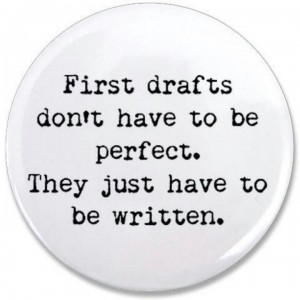Bird by Bird II: The Bird Strikes Back

At about page 30 of Anne Lamott’s Bird by Bird , she talks about bad first drafts. Many writers worry about having a strong first draft to base their writing off of. However, Lamott is able to help writers regain their confidence, and focus more on the writing. She tells that even professional writers have bad first drafts and feel bad about them. This helps writers of all skill levels come to the realization that they are not bad because their drafts are less than exemplary. This affects me personally, because there have been many times where I scrap a piece of writing that I have worked hard on simply because I know it is bad. However, it would be more beneficial to save the writing to improve on. Also the fact that professional writers go through many rough drafts, and are often upset with them gives me hope for my writing. I really enjoy Anne Lamott’s writing so far because she makes reading about writing somewhat fun. She makes plenty of jokes throughout her



